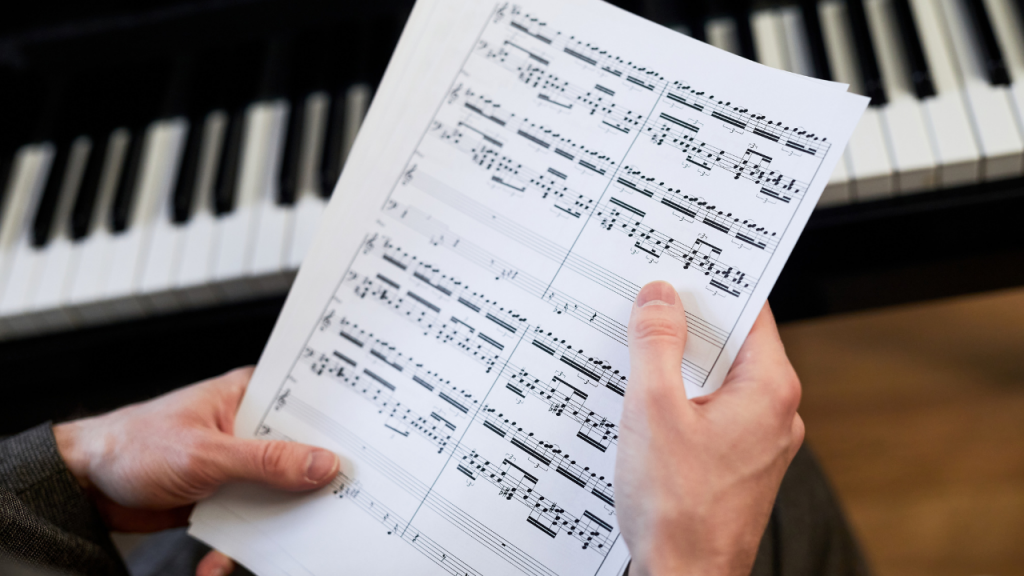Greetings, music students! If you’re reading this post, you’ve probably looked at a piece of sheet music and wondered what those little lines poking above or below the staff were all about. No need to fret (guitar pun very much intended) – those are merely ledger lines. These handy little lines, as you will soon see, are invaluable tools when it comes to reading music. Read on to find out how you can use them to take your music reading skills to the NEXT LEVEL (get it, because the lines are like….never mind).
What are Ledger Lines?
First things first. We already know what the grand staff is, right? Let’s do a quick refresher just in case. The grand staff is a set of two staves, the Treble Clef Staff and the Bass Clef Staff. It is typically used in piano music to notate a wide range of pitches (notes), and in turn indicate which key to play on the piano.
- Treble Clef Staff: The upper staff represents higher notes and is typically played with the right hand on the piano.
- Bass Clef Staff: The lower staff represents lower notes and is typically played with the left hand on the piano.
To understand ledger lines, we must first understand that the lines and spaces on the grand staff represent pitches (notes) on the piano. Here is what the grand staff looks like with the pitches (both on the lines and in the spaces) being notated:

You’ll notice that there are 5 lines and, consequently, 4 spaces on both the treble and bass clef. In theory, there could have been 6 lines or even 4 lines, but this convention was chosen. Too many lines would likely make the music harder to read, while too few lines would force the use of more ledger lines, which also makes the music more challenging to read.
So what exactly are ledger lines? Ledger lines are the small lines that you often see drawn above the treble staff or below the bass staff. They function the same way as the longer lines of the staff, meaning they indicate a pitch (note) to be played on the piano. Here are some examples:
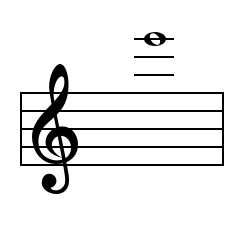
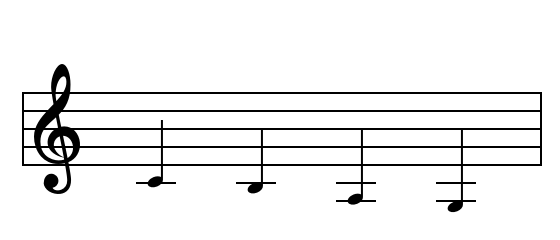
But why, you may ask, are ledger lines smaller if they are the ‘exact same’ as the longer staff line? The reason for this is primarily to maintain the readability and clarity of the music. If ledger lines were as long as the staff lines, they could create visual clutter, especially when multiple notes with ledger lines are close together. By keeping ledger lines shorter, the eye can more easily distinguish between the notes on the staff and those on ledger lines, making it easier for musicians to quickly read and interpret the music. This design helps keep the musical notation clean and organized, ensuring that the performer can focus on the correct pitches without unnecessary confusion.


The first ledger line you’ll learn – Middle C
One of the most popular notes you hear about as a piano player is, arguably, “Middle C.” It practically becomes home base when you’re starting out. Middle C is not written on either the treble or bass staff; instead, it’s notated in the space between the two staves. In fact, if you look closely, you’ll notice that Middle C is actually on a ledger line.

Middle C is not only the first note you learn to play on the piano, but it’s also an incredibly important note in music, acting as a central reference point for both the treble and bass clefs. Middle C falls right between these two clefs, and a ledger line is used to represent it. It is positioned on a single ledger line just below the treble staff and just above the bass staff. This placement helps musicians easily locate and recognize Middle C, bridging the gap between the treble and bass clefs.
By using a ledger line for Middle C, we keep the notation clear and avoid the confusion that might come if Middle C were squeezed into the existing lines and spaces of either staff. This nifty method maintains the visual organization of the grand staff and makes for an intuitive transition between the treble and bass clefs.
Ledger lines as musical scaffolding
Think of ledger lines like little ladders that help us climb higher or lower into the world of musical pitches. Without them, the melodies and harmonies we could play would be stuck within the confines of the grand staff, which is somewhat limited. Imagine you’re playing the piano, and the next note you want to play is above or below the ones neatly nestled on or between the grand staff lines. That’s where ledger lines swoop in to save the day, extending the musical range and letting us hit those high notes or rumble with those low bass notes. (See what I meant before about “NEXT LEVEL”? My jokes are fun AND educational! Wow, you guys are a great crowd. Don’t forget to tip your waitstaff – try the veal!)
Cool but how exactly do I read ledger lines?
For most of us, reading ledger lines is a bit harder than reading notes on the treble and bass clefs. That being said, you’re not entirely helpless here. Did you really think your pals at Playground Sessions would leave you empty handed? Why are ledger lines harder to read? Simply because you play them less often on the piano, so it just takes more time to memorize them! While ledger lines are super handy for reaching those sky-high or basement-level notes, too many ledger lines can turn a music sheet into a cluttered mess, making it harder for musicians to follow along. If you’re at the point of adding ledger lines in excess, it usually means you’re using the wrong clef or instrument.
Another approach to understanding ledger lines would be to think in terms of intervals, which is a term you have most likely heard before if you’re learning music. Intervals, AKA the distance between two notes, is basically the core tenet of music – we use intervals in everything from memorizing the sequence of the notes, to making chords. For this approach, focus on the sequence of notes as it’s laid out on the piano. Know it up, down, and inside out. That way, you can know that if, say the top line is A on your bass clef, then the first ledger line above it has to be C.
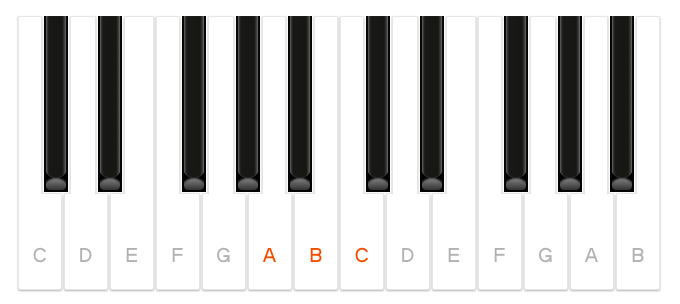
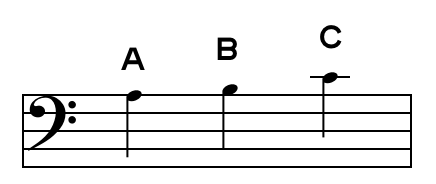
This all does beg the question, however: ‘Why are ledger lines harder to read?’ This is because you simply play them less often on the piano, thus it takes more time to memorize them! As I said before, the format of music notation is designed to only use ledger lines in moderation. That being said, you’re not entirely helpless here. (Did you really think your pals at Playground Sessions would leave you empty handed?) For most of us, reading ledger lines is a bit harder than reading notes on the treble and bass clefs. If this still isn’t totally clicking for you, check out the video lesson below from Playground Sessions for more info on ledger lines, intervals, and the sequence of notes.
So, what’s the bottom (Ledger) Line?
Ledger lines may seem like tiny details, but they pack a punch when it comes to expanding our musical horizons. Learning them can be kind of tricky at first, but the more you play and come across them, the more you’ll start to look at ledger lines just like you do with the grand staff—they’re simply an extension of it.
As you can see, there are a few different ways you can go about learning ledger lines. And as you grow as a musician, you’ll find what works for you, just like every other musician out there. Still, all those musicians can agree that it makes the most sense to have a plethora of tools in your arsenal, especially when starting out! Keep working to find what method best suits you. Sometimes, the best way to start is to just jump right in—so click below to kick-start your musical journey on the piano with Playground Sessions. We promise to give you plenty of opportunity to practice reading ledger lines…;)
Keep on playing! 🎶
